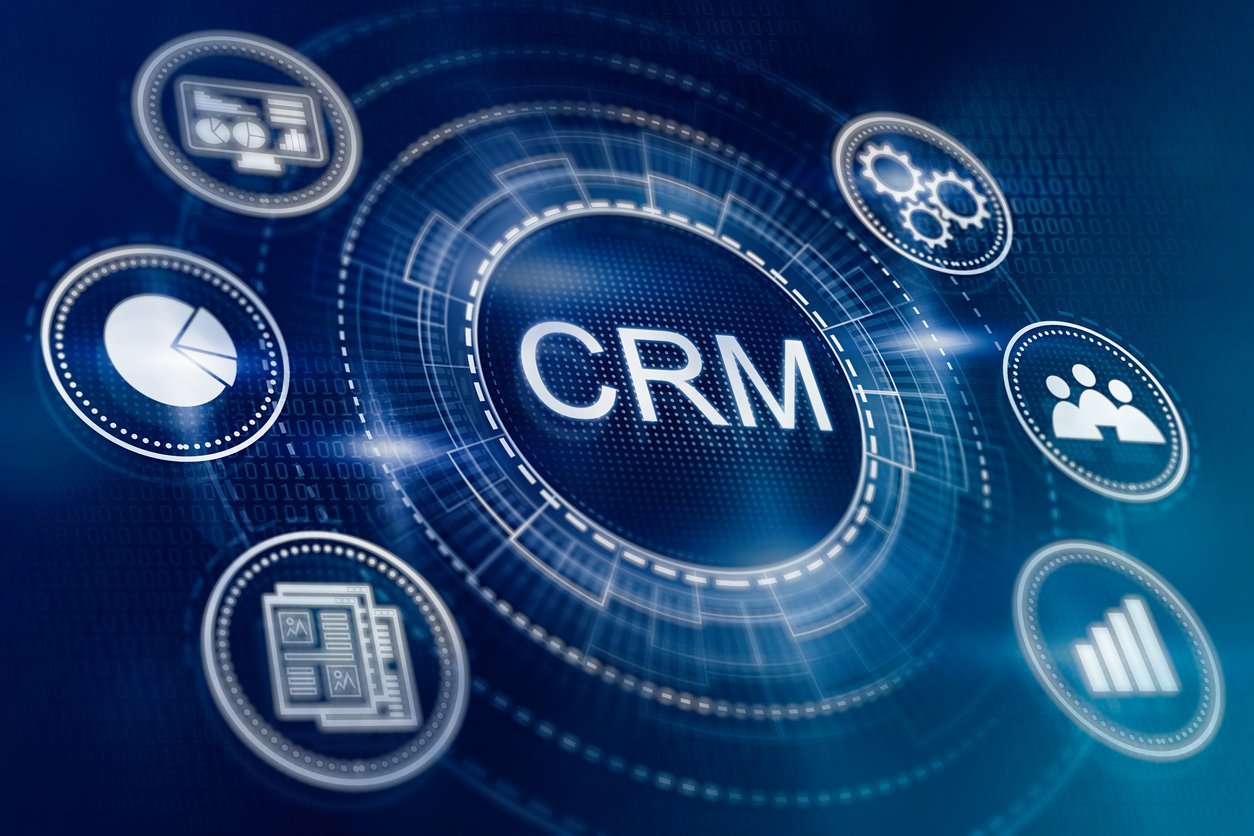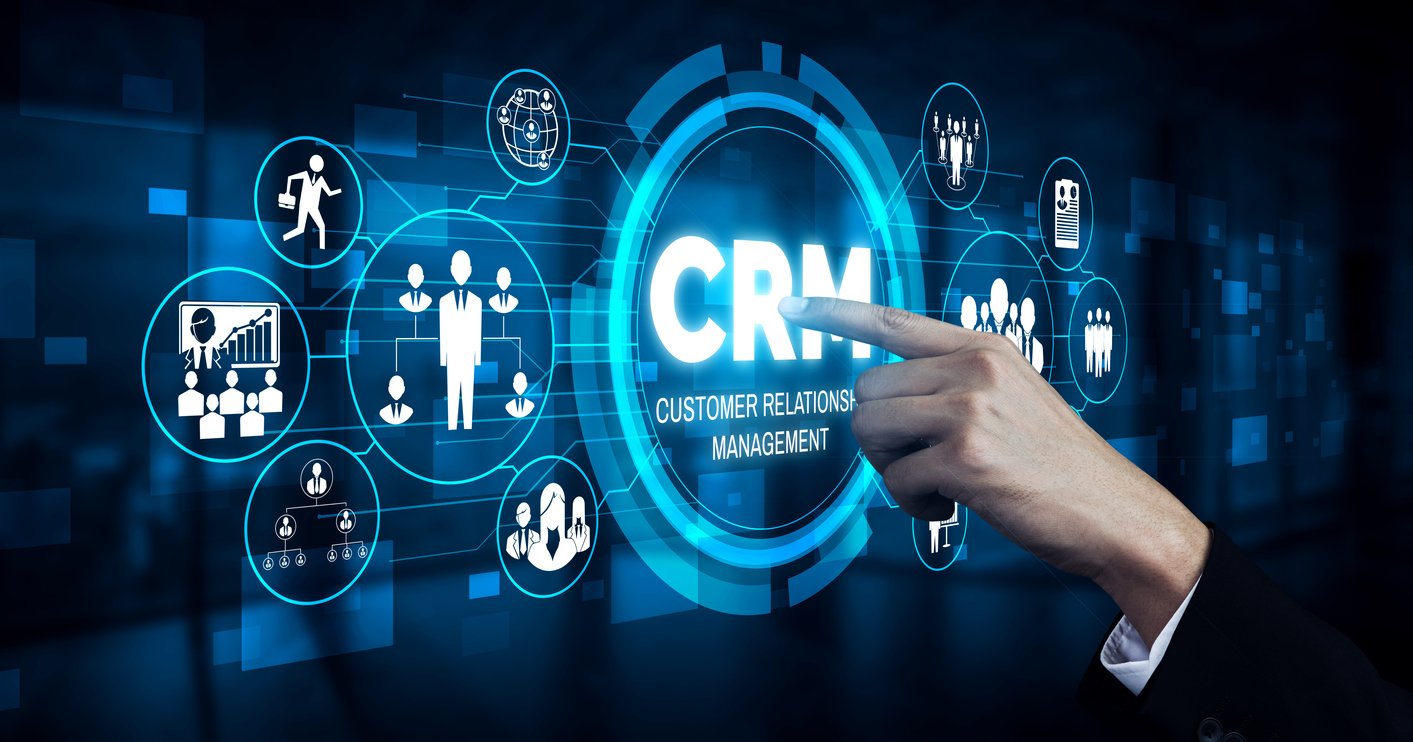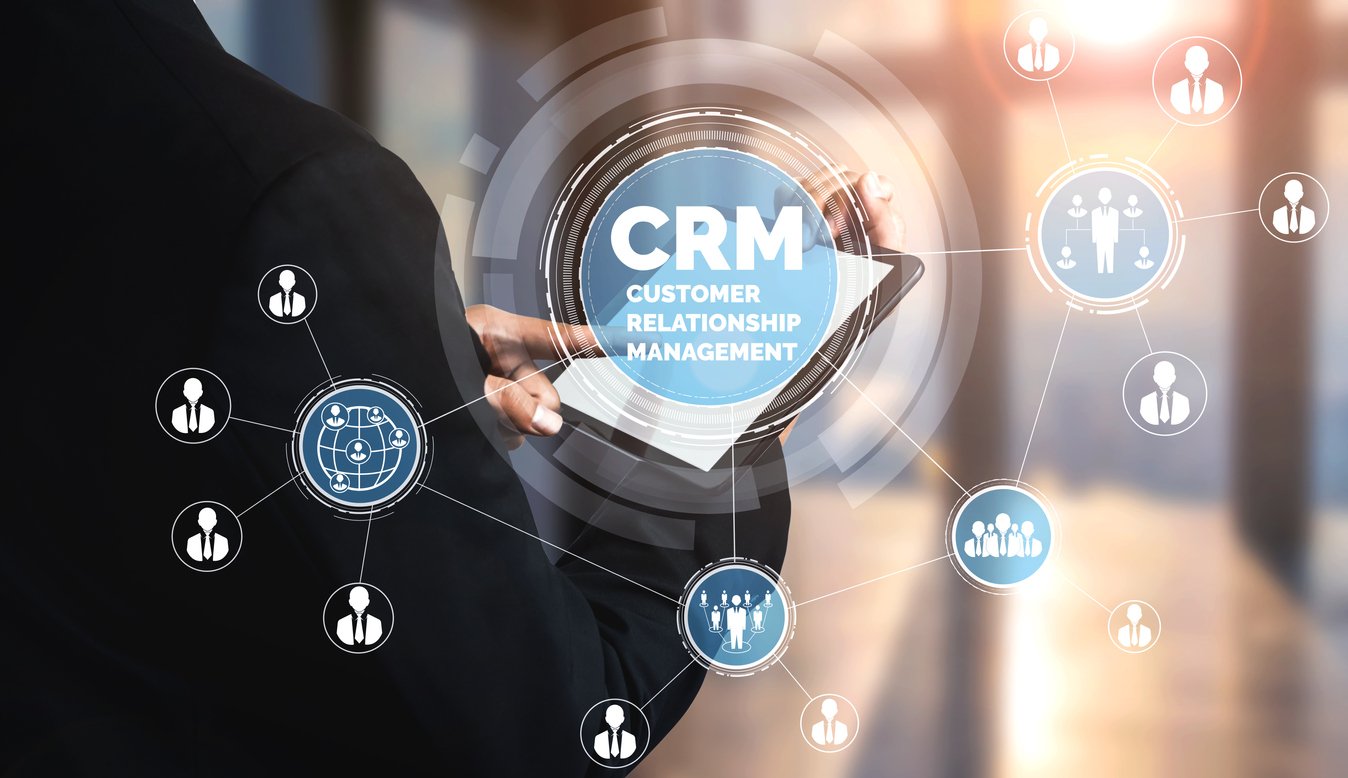
CRM Data Guide: Types, Uses, Best Practices, & Data Structure
 Updated on
Updated on
By Ringy
Table of Contents
Table of Contents
You may not realize it, but your customer relationship management (CRM) system produces and stores a ton of data.
Whether it's a customer's name, physical address, company information, phone number, email address, a recent purchase, or a help desk call, your CRM stores all of that information. On the other hand, your CRM is also getting new data from phone calls, emails, and other communications between your agents and customers. This data is often used for reporting and analytics purposes.
For most organizations, the CRM is central to their business operations because it's the master source of customer account information—feeding into every other integrated piece of software the company uses. It's basically the brain of the organization.
Because CRM data is so important to the functioning of the entire organization, understanding CRM meaning, including how data is collected, stored, managed, and used, is paramount. After all, the CRM helps connect the organization so that sales, marketing, customer support, and other departments are accessing and using the same customer information.
In this article, we dive into the basics of CRM data and how important it is to keep it clean, accessible, and secure so that every employee and stakeholder in your organization can use it effectively.
What is CRM Data?
Think of your CRM like the central point in a web. Each thread that extends out from your CRM collects and transfers information to different applications, systems, and software in your company's tech stack. The information that your CRM is controlling is called CRM data.
CRM data helps companies better understand their customers and prospects to sell to them more easily. The system can be used to identify sales opportunities, record and escalate customer service issues, store customer communications, and manage marketing campaigns.
Aside from understanding how to sell to customers better, CRM data also helps inform different business decisions, like what improvements should be made to products or services, how budgets should be allocated, which endeavors are the most and least profitable, and more.
Types of CRM Data

Your CRM will collect and store four main categories of data. Knowing the types of data that go into each of these categories is important for maximizing your CRM investment. The table below summarizes each of these four data categories, while the different sections go into more detail about each data type.
|
Type of CRM data |
What it is |
|
Identity data |
Any information that can be used to contact the customer, including name, address, phone number, and more |
|
Descriptive data |
Information about previous communications between the customer and the company |
|
Qualitative data |
Survey and feedback information from customers |
|
Quantitative data |
Objective numbers that form different company metrics |
1. Identity Data
You need to be able to get in touch with your customers in the best way possible by gathering their contact information. Identity data consists of:
- Contact name
- Company name and address (for B2B)
- Phone number
- Email address
- Social media usernames
Identity data aims to give your sales, marketing, and customer service agents a way to contact customers. Identity data should be considered master data, which means that it's essential information that's needed to start a transaction and should be static across all systems. Master data is essential for effective customer sharing data in CRM systems. As you can imagine, it's extremely important to keep master data clean and accurate so that it's correct across all systems and business processes that need it.
Many CRM systems will also allow you to assign an account number to each individual customer account for easier searchability and sorting, though it's not always required.
2. Descriptive Data
The more granular pieces of information about your customers are called descriptive data. This is the information that gives agents more context about how the customer has interacted with your company so far and who they are as business partners and people.
Descriptive data regarding customers is usually found on their customer account dashboard and includes:
- Job position and hierarchy in their company (B2B)
- Previous purchases and dollar amount spent
- Products or services currently owned or subscribed to
- Previous communications with customer service agents, salespeople, or technical support, including emails, phone calls, and text messages
- Notes that agents have left about the customer, such as important points from a previous discussion or current status on a technical support issue
Agents can use the descriptive data that the CRM provides to understand a customer better without the customer having to repeat themselves every time they call. Further, the descriptive data can tell an agent important information at a glance (such as shipping status) which can help them answer questions that a customer has quickly.
3. Qualitative Data
Acquiring feedback from customers is essential for a well-run business. Many organizations send out surveys via email or SMS asking for customer opinions on a recent sale or interaction with a technical support or customer service agent. This feedback is compiled and stored as qualitative data.
By analyzing the qualitative data, business leaders and managers can get a high-level look into agent performance, customer satisfaction level and better understand overall customer attitudes towards the business. This information can be used to make improvements to different business processes, improve products and services, and much more.
4. Quantitative Data
Quantitative data is the numbers that make up different company metrics that can apply to individual employees, entire departments, customers, and much more. Different metrics can be applied together to clean information. For example, the customer churn rate can be found by dividing the number of lost customers at the end period of time (let's say a month) by the total number of customers you had at the beginning of the period.
Different types of quantitative data that a CRM can provide includes:
- Customer lifetime value (CLV)—estimates how much money a customer will spend over the course of their relationship with your company
- Customer acquisition cost (CAC)—the amount of money that needs to be spent to attract a customer to your business
- The average revenue per customer (ARPU)—the average revenue generated per customer
- Sales close rates
- Progress toward sales goals
- Website conversions
In a nutshell, quantitative data gives objective insight into overall business performance at a high level and granular level. Quantitative data can be used to measure sales progress, aid in more accurate and realistic forecasting, and help determine future budgeting.
How is CRM Data Collected?

CRM data can be collected in a variety of ways. Interconnected systems, like lead tracking software or an automated calling system, provide certain data types to the CRM, while employees, managers, and other stakeholders can manually enter information into the system.
It's important to understand where the data in your CRM is coming from so that you can ensure that it's being stored and used correctly.
Manual Entry
Any employee with access to the CRM will likely need to enter information into it manually at some point. Typically manual entry information comes from customer phone calls where new orders or technical support tickets must be entered into the system.
Unfortunately, a natural product of manual entry is human error. It's easy for someone to accidentally spell a customer's name incorrectly or make a typo on a phone number, which can reduce the reliability of customer data. To prevent duplicate or inaccurate data from plaguing your CRM, it's important to automate data entry when you can (we'll get into more detail in the CRM data management best practices section of this article).
Data Integration From Other Programs or Systems
Your CRM can collect data from other programs or systems that it's connected to. The information that your CRM can collect from these different areas includes customer communications (e.g., social media or email) as well as shipping data, technical support tickets, website purchase data, and more. Integrations ensure that sharing customer data in CRM is done quickly and efficiently.
Call centers, for example, will often integrate VoIP systems with a CRM if the CRM doesn't already have a VoIP system included. Take a look at our comprehensive article titled “What is VoIP” for more information about these systems.
Sales and Support Interactions
When customers interact with your employees, the CRM can save this important communications information. From recorded calls to incoming SMS messages, the CRM usually allows this information to be viewed on account-specific dashboards.
Customer Feedback
It's important to ask your customers what they think of the customer service and products you provide so that you can get honest feedback to improve your processes. A CRM is able to store the information gleaned from customer feedback, whether it's surveys conducted through a connected program or direct feedback from customer interactions.
Web Forms
A great way to collect lead information is through web-based forms. Gated content, demo or sales requests, and more can all be useful tools to collect prospective customer information so that sales associates can reach out to them and nurture them into a sale.
A CRM effectively stores lead information, allowing you to organize different types of incoming leads into specific priority areas. This helps your salespeople be more productive and targeted with their prospect nurturing efforts.
How is CRM Data Used?

Once CRM data is collected, it can be used for a wide range of purposes, all focused on improving certain aspects of the business, from customer service to operations.
Some specific ways that CRM data can be used include:
1. To Provide Better Customer Service
It's difficult to quantify how effective an organization's customer service efforts are without looking at all customer feedback as a whole. A CRM can aggregate customer feedback from various sources, like online surveys, direct phone calls, SMS messages, social media, and more, to provide a holistic view of customer sentiment.
Further, communications data between customers and employees can be used to help determine the efficiency and effectiveness of certain processes and procedures.
For instance, Let's say a customer sends a Facebook message wanting product support. How long does it take for that message to be actioned by the correct employee? If the communication needs to be moved from social media to another communication channel, like email, is that transition seamless for the customer and for the employee helping them? Being able to see the path of communication from start to finish for multiple customer interactions helps narrow down areas where improvements need to be made.
2. Make More Educated Business Decisions
Without data, business decisions can only be made based on guesses and previous experience. CRM data provides an objective look at how well a business is doing, including finances, customer service, sales, and operations. By collecting this data and analyzing it, more educated and targeted business decisions can be made, ultimately contributing to better business success.
3. Improve Analysis and Forecasting Accuracy
It's extremely difficult to make realistic predictions without the use of data. Telling salespeople to sell a certain number of products or services per month when you don't know how many new, quality leads are being generated in that period of time means you're either setting your expectations too low or too high. To reach the sweet spot of challenging your sales team while not being unrealistic with your expectations, it's important to take full advantage of the data that your sales CRM provides. You can make more realistic and informed sales forecasts by looking at historical sales data alongside lead generation data.
4. Personalized Marketing
Here's how CRM data can help you personalize your marketing strategies:
- Targeted Campaigns: CRM data allows you to segment your audience based on specific criteria like purchase history, demographics, or interests. This enables you to craft highly targeted marketing campaigns with messaging that resonates with each segment.
- Personalized Content: CRM data can also be used to personalize the content you deliver to your customers. For example, you can tailor website content, email newsletters, or social media posts to address the specific needs and interests of different customer segments.
5. Enhanced Customer Retention
By analyzing customer purchase history and interactions, you can identify patterns and predict customer behavior. This allows you to:
- Proactively address customer concerns before they escalate into issues.
- Offer personalized recommendations for products or services that complement their past purchases.
- Implement loyalty programs and reward schemes to incentivize repeat business.
These efforts all contribute to building stronger customer relationships and boosting retention rates.
6. Strategic Decision-Making
CRM data provides valuable insights that can inform strategic business decisions across various departments. You can:
- Identify trends in customer behavior and market demand to adjust product offerings or marketing strategies.
- Measure the effectiveness of marketing campaigns and optimize your budget allocation.
- Analyze sales pipeline data to improve forecasting and resource allocation for your sales team.
By leveraging CRM data for strategic decision-making, you can ensure your business stays ahead of the curve and remains competitive in the market.
How Does Poor CRM Data Affect Business?
While CRM data offers a wealth of benefits, neglecting data quality can have significant downsides for your business. Here's how poor CRM data (sometimes referred to as dirty CRM data) can hinder your operations:
Reduced Sales Effectiveness
Sales teams rely heavily on accurate CRM data to target prospects and close deals. When CRM data entry is inconsistent or incorrect, sales representatives may find themselves reaching out to the wrong contacts or missing key opportunities.
For instance, outdated or incorrect customer information can lead to wasted efforts on prospects who are no longer interested or are outside the target market. This reduces overall sales effectiveness and can negatively impact revenue.
Inefficient Marketing Campaigns
Poor data quality can lead to irrelevant messages being sent to the wrong audience, resulting in wasted marketing spend and a decline in campaign performance. Imagine sending discount offers for products a customer already owns, or bombarding them with generic marketing materials that fail to address their specific interests.
Customer Dissatisfaction
Customer dissatisfaction is a direct consequence of poor CRM data. When customer interactions are based on inaccurate or incomplete data, it can lead to misunderstandings and unmet expectations.
For example, a customer might receive irrelevant product recommendations or duplicate communications, which can be frustrating. Ensuring that CRM data cleaning is regularly performed helps maintain accurate customer profiles, leading to better service and higher satisfaction.
Operational Inefficiencies
Operational inefficiencies arise when poor CRM data disrupts the smooth functioning of business processes. For instance, incorrect CRM data can lead to delays in order processing or errors in customer service. This can slow down operations and increase costs. Proper data management CRM practices help streamline operations by ensuring that all departments have access to reliable information, facilitating better coordination and efficiency.
Strategic Missteps
Strategic decision-making is heavily dependent on accurate data. Poor CRM data can lead to strategic missteps, as business leaders may base their decisions on flawed information. An analysis based on inaccurate CRM data might suggest expanding into a market segment that is not as promising as initially thought.
To avoid such pitfalls, businesses must prioritize CRM data management to ensure that their strategic planning is based on accurate and comprehensive data.
Regulatory Compliance Risks
Inaccurate CRM data can expose businesses to regulatory compliance risks. Regulations such as GDPR and CCPA require companies to maintain accurate customer data and provide customers with certain rights regarding their information.
Poor CRM data management can lead to non-compliance, resulting in hefty fines and damage to the company's reputation. Implementing rigorous CRM data cleaning and management practices helps ensure compliance with regulatory requirements and protects the business from legal risks.
Ineffective Product Development
Product development efforts can also suffer from poor CRM data. When customer feedback and usage data are inaccurate, product development teams might not fully understand customer needs and preferences. This can result in products that do not meet market demands, leading to poor sales performance. Accurate CRM data entry and management are crucial for gathering reliable insights that guide effective product development and innovation.
CRM Data Management Best Practices

It's not enough to simply collect CRM data, it must also be stored and managed properly. After all, you wouldn't want sensitive data like customer information or confidential company financial data to get into the wrong hands.
Here are some best practices for making sure your CRM data is useful and protected:
1. Make Sure the Current Data in Your CRM is Up to Date and Clean
If your CRM is plagued with inaccurate, missing, or duplicate data, it can cause serious issues with making effective business decisions. Manual entry and problems with data syncing from connected applications and programs can cause CRM data issues.
Programs like Dun & Bradstreet can help dedupe and fill in missing data or fix incorrect customer data using public records to ensure that your CRM is always housing the right master data for your employees and stakeholders to use.
2. Automate as Much Data Entry as Possible
Let's face it, human error is a thing, and it's not something that can be completely prevented. Anytime manual entry is involved, there is the potential for an error to occur. Setting up your CRM to automate as much data entry as possible is important so that the possibility of errors can be lessened. For instance, if an employee enters a new customer name under an existing company, the name of the company, location, and more could be automatically filled in, leaving only the new customer's name and contact information to be manually entered.
3. Sort Incoming Leads Accordingly
Any new leads that are coming into your CRM from different sources should be sorted by order of priority as soon as possible. Some CRMs automatically sort incoming CRM leads into different areas of priority based on preset criteria, while others allow you to manually sort leads.
With Ringy, for example, sales associates can view incoming leads per vendor and choose which leads to action based on certain criteria.

4. Perform Regular Audits of Your CRM Database
Even with various methods to keep CRM data clean, doing regular audits of your database is important to purge irrelevant data and ensure that the data in your CRM is indeed clean and effective.
A CRM audit should look at the following factors, as listed in the table below:
|
CRM audit factors |
Considerations |
|
Effectiveness of data |
Is the data important, useful, and necessary? If not, it should be deleted per your organization's data governance policy. |
|
The purpose of the data |
Does the data provide enough information to be used for a specific purpose, such as informing company decisions, or is it missing key components? If it's missing components, the data needs to be either fixed or removed. |
|
Whether the data meets regulatory requirements or not |
Is the way the data is stored, transferred, and used in line with local and federal regulations? If not, adjustments must be made to ensure the data is appropriately stored and used. |
|
Integrations |
Are programs, applications, and systems integrated with the CRM working properly regarding secure data movement? If not, the appropriate adjustments will need to be made. |
5. Implement Effective Data Governance
Effective data management CRM is paramount to ensure the security of the data that lives in your CRM. Sure, the CRM you're using will provide a certain level of data security, but it's also up to you to ensure that the data moving between your CRM, applications, programs, and systems is secure on your end as well. To ensure data security when data is in transit or at rest, you need a data governance policy.
Data governance might sound pretty intense, but it's really just setting out a logical framework for how sensitive data should be handled in your company. Bigger organizations will often have a centralized IT team that oversees data security at a high level, with individual departments that know the data they work with best setting rules for how their data is used. For smaller organizations, it's more likely that data governance and management will be done by one team. In either case, software like AWS can help with executing secure CRM data management and governance.
Ideal CRM Data Structure

Think of your CRM data structure as a library. In a library, the books are organized by author and genre, and each book has a basic description on the back cover explaining generally what it is about. In addition, most libraries have a computer system available where you can easily search for the book you need based on a few keywords.
Your CRM should be the same way. Data should be easily accessible to those who need it, with the right security in place.
To organize your CRM appropriately, these are the important factors you need to consider:
Organize Data into Logical Categories
Like library books, your data should be organized into logical categories. These categories should follow a parent-child hierarchical structure that makes sense for your business.
For example, parent categories for customer data for a manufacturer could be based on relationships, like suppliers, vendors, and shippers and receivers. From there, the categories would get more granular, including products handled, locations, contact information for different points of contact, and more.
Use Clear and Concise Naming Conventions
When files are named different things by different people, it can make it difficult to find important information. Worse, automatic systems in your CRM may have difficulty finding information for you when you conduct a search if the file isn't named properly. It's like trying to find the final version of a project file and you come across a folder with files like this:

Establishing naming conventions for manual entries and automated processes that categorize incoming data is important. Otherwise, you're setting yourself and others up for unnecessary frustration.
Use Data Tags (or labels)
Many organizations have a variety of structured and unstructured data (structured data is already organized and formatted, such as a Word document, whereas unstructured data is not organized or formatted in such a way that makes it easy to understand) that they have to contend with, meaning that they need a way for this data to be understood and used properly.
Categories for data classification are helpful at a high level, but each piece of individual data needs information attached to it to be able to be recognized by these categories and organized properly.
Many CRMs and data governance programs offer this functionality. Data tags, also called labels, help your CRM understand specifics about a piece of data, like where it came from, what it is, and what it could be used for.
For example, let's say you have an incoming lead coming in from your website. The CRM could tag this data like this:
- Website form (where the lead came from)
- Industry or segment (the industry or type of business that the customer works in)
- Products or services that the potential customer is interested in
- Date and time that the lead came in
- Lead score (a system set by your business to determine the priority of incoming leads)
Of course, it would be impossible to manually tag each piece of data, so data management systems (which can be integrated with your CRM or come as a part of its functionality out of the box) read data and assign information to it. From there, the data can be sorted into your CRM database.
Conclusion
Ensuring that your CRM data is managed properly is important for business success. Understanding the types of data that your CRM stores and basic data management principles help you better use your business's data.
If you're looking for a robust but simple CRM, book a demo with Ringy today.

Skyrocket your sales with the CRM that does it all.
Calling? Check. SMS? Check. Automation and AI? Check. Effortlessly keep in touch with your customers and boost your revenue without limits.

Take your sales to new heights with Ringy.
Sales in a slump? Ringy gives you the tools and flexibility you need to capture leads, engage with them, and turn them into customers.
Subscribe to Our Blog
Enter your email to get the latest updates sent straight to your inbox!
Categories
Related Articles




































































































